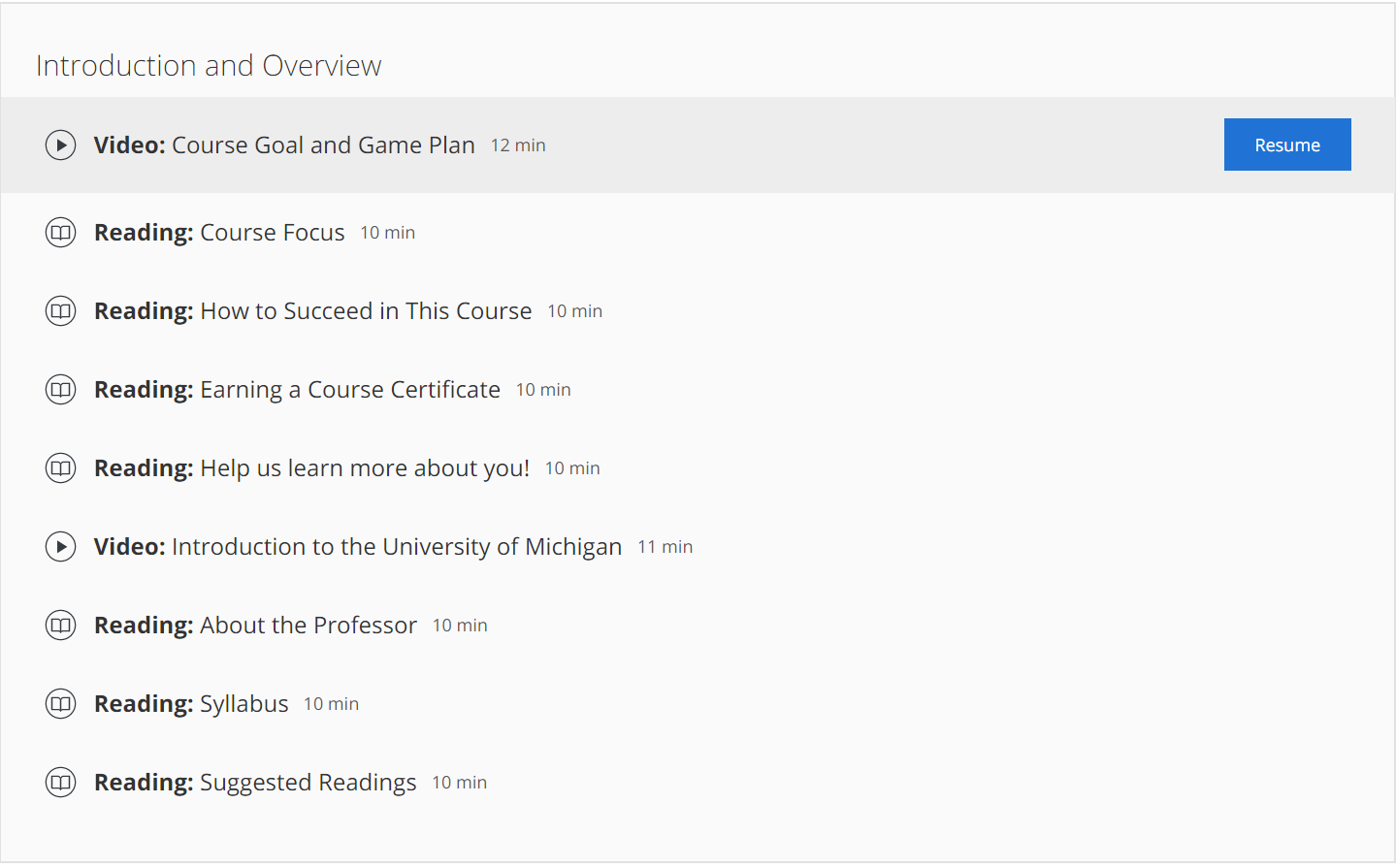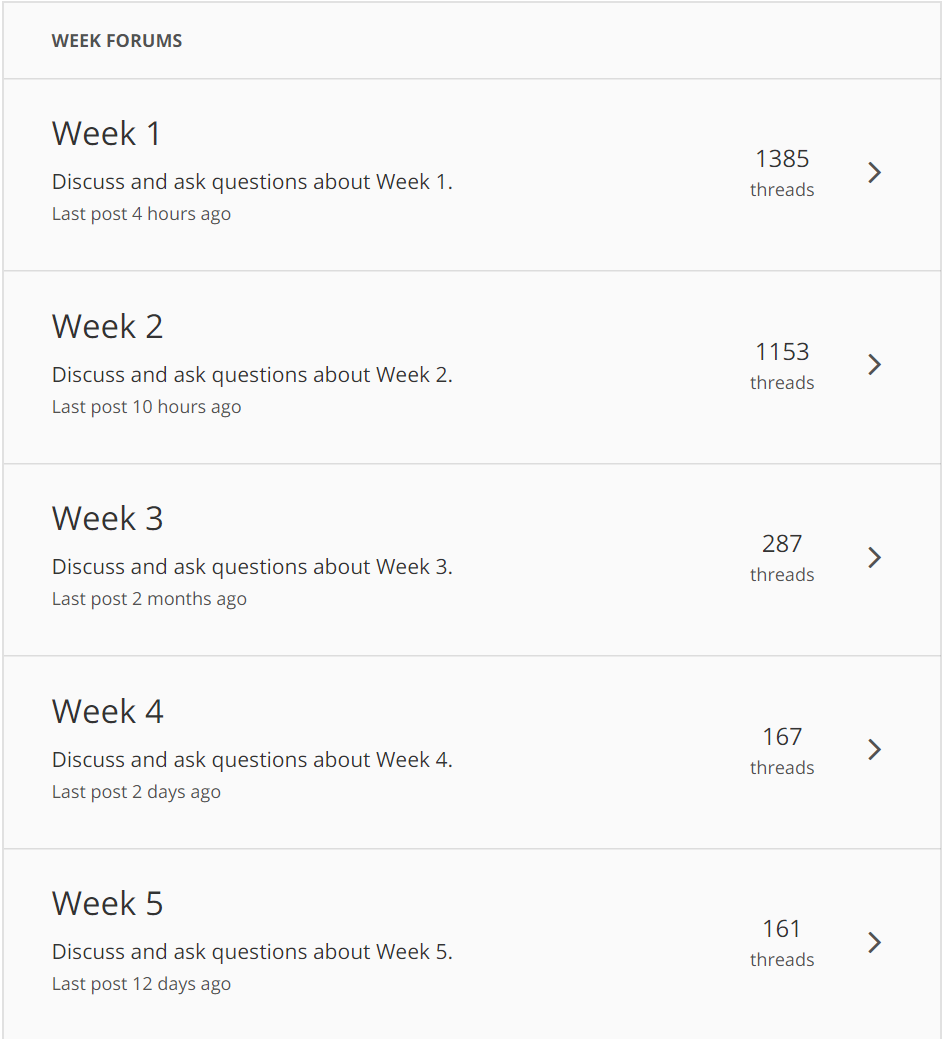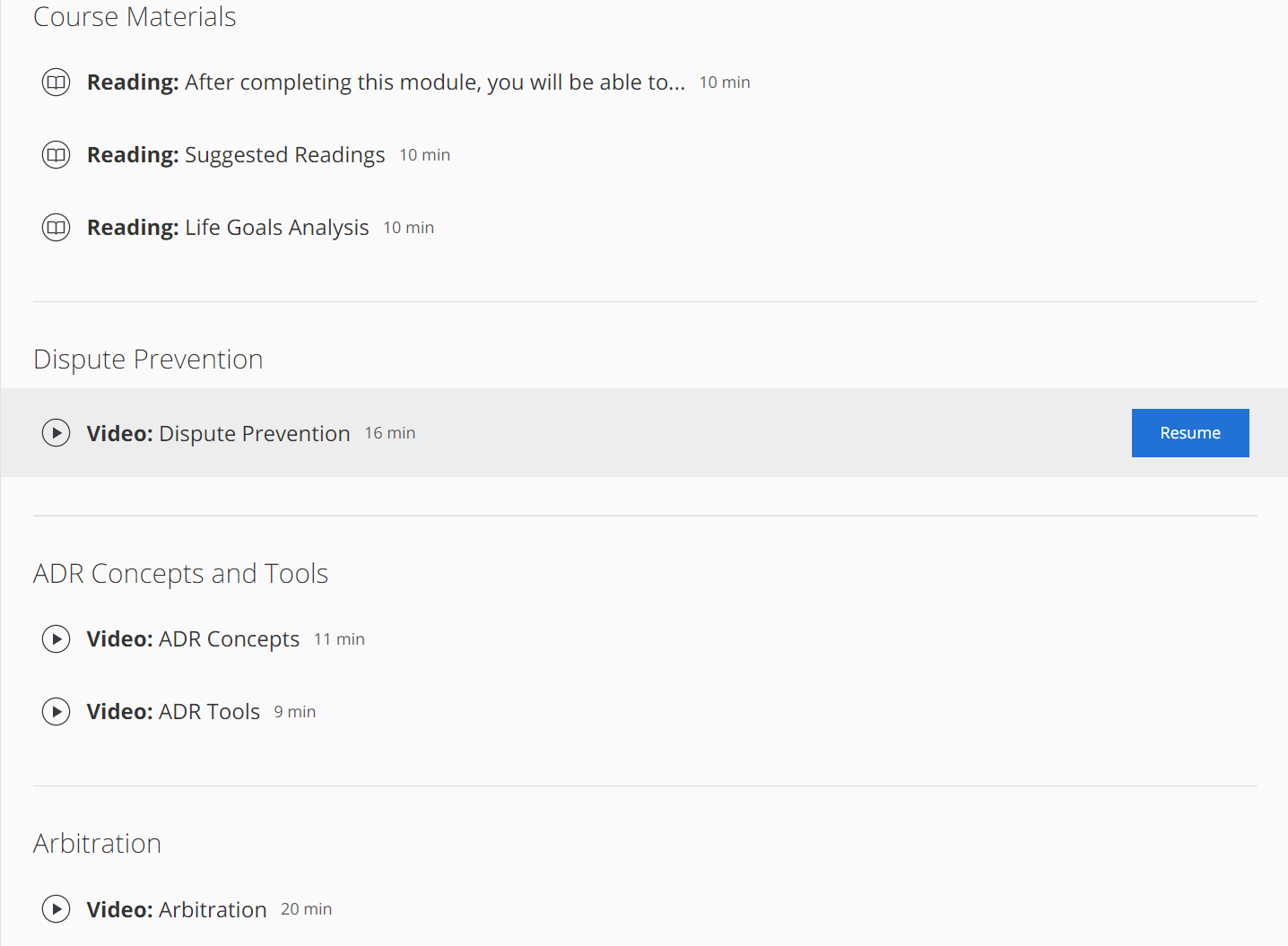November 22, 2019
Problem of Practice
How does incorporating discussion boards in a graduate level online course affect students’ career readiness in the form of written communication, interpersonal skills, and collaboration in Engineering?
To what extent does the level of engagement with discussion boards in a graduate level online course affect students’ career readiness in the form of written communication, collaboration, and adaptability in Engineering?
Part 1
As the creation and offerings of Massive Open Online Courses (MOOCs) increases for big named Universities, I decided to take the time to be a student in a course. My work site has also begun making MOOC style classes in different Colleges than the one I work. I hoped to see the types of pedagogy utilized in these free courses and compare it to a credit-bearing online course at the same University.
Part 2
Date: November 22, 2019
Site: Successful Negotiation: Essential Strategies and Skills MOOC Course
Observations
During this week’s observation, I spent some time completing a MOOC style course hosted by Coursera. This course called “Successful Negotiation: Essential Strategies and Skills,” was created by the University of Michigan.

The course was divided up into 7 weeks/modules. These weeks/modules were then divided up with readings, videos to watch, and optional discussion boards.

The discussion boards were used to discuss and ask questions about the week’s content. Students were using the discussion boards, but there were little responses occurring between students. In Week 1’s discussion board, there was 91 pages of responses without any responses from the instructor or the moderators. A small handful of students would respond to each other, but the majority of the posts were unanswered.

The videos were recorded in a studio with PowerPoint slides integrated. Closed captioning and transcripts were also available in multiple languages. The required readings were very short and were often excerpts from the recommended readings/books. Each week/module had a knowledge check that consisted of 5-10 true/false and multiple choice questions. There was also an exam at the end that you had to receive 80% in order to pass the class. Finally, there was one large project where the student would practice the negotiation skills they learned. The student was required to find a partner, read through the scenario, and act out how they would negotiate. They would then receive feedback from their partner and reflect upon the process.

Comparing to an Educational System
In this case, a MOOC is an educational system that relies on revenue and could be considered part of the for-profit sector. Anyone can produce a MOOC and publish it on a website such as Coursera. Many Universities have partnered with companies such as Coursera to offer their courses for free or at reduced rates. Some schools even offer Degree programs through the site. Since MOOCs often have little interaction with instructors, and students can learn at their own pace, the entire system is very loosely coupled. There is little regulation and moderation of discussion boards/student questions – leading to little student-to-instructor interaction. In addition, many of the courses are set up for little-to-no interaction due to this idea of no regulation/moderation.
Part 3
Lewis, C. (2015). What is Improvement Science? Do we Need It in Education?. Educational Researcher, 44(1), 54-61.
Summary:
Change in the Educational Systems can occur in two ways: through experimental science or improvement science (action research). Experimental research is focused on the theory of a program or curriculum. The implementation is the same regardless of the implementation location. Improvement science focuses on varying the implementation based on the system in which it is being implemented. Improvement science incorporates two types of knowledge: knowledge of the curriculum and knowledge of the system as a whole. It is driven by a “plan-do-study-act (PDSA) cycle (Lewis, 2015, p. 54). Through improvement science, the change is driven by the stakeholders with the greatest impact (such as teachers), and reported to higher administration.
The best change implementation is through a combination of both. Experimental science has given us many theories for improving teaching and learner experiences. By incorporating these theories with variation based on the system, we can tailor these theories for practice (improvement science).
Remember:
- The best type of change implementation occurs when it is tailored to the specific educational system.
- Experimental research is easier to set-up, since it is a one-size-fits-all model. But, in the long run, the particular change may not coincide with the educational system and may end up failing.
- Improvement science gives the educators and teachers the empowerment to lead change on a larger level.
Part 4
- How do improvement science and action research differ? How are they similar?
- It is extremely important to consider the entire system when applying a certain change. For example, this is why I have decided to go with a career-readiness spin in my research project. Since students are already successful in the online courses, arguing retention and student success would have failed.